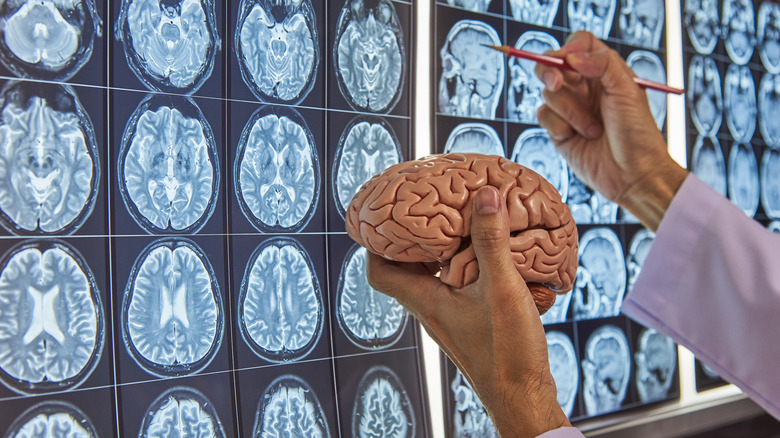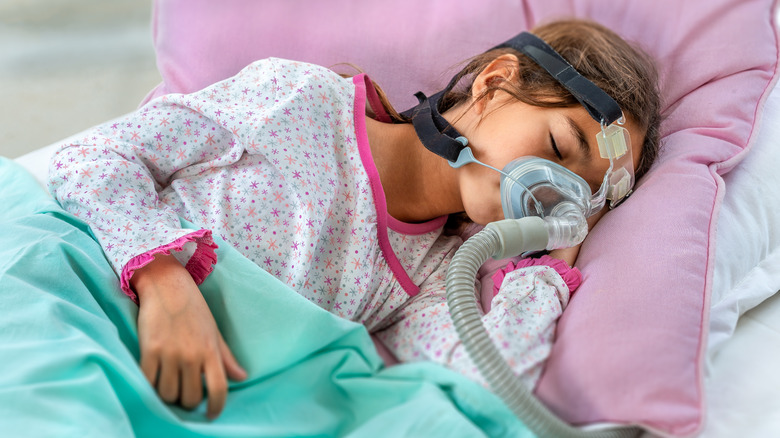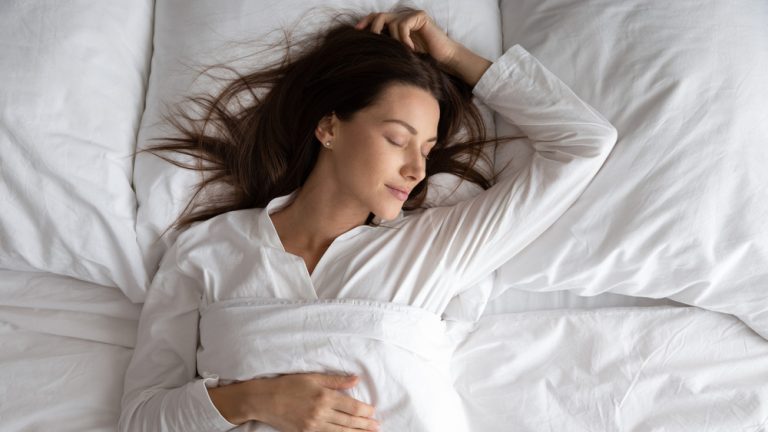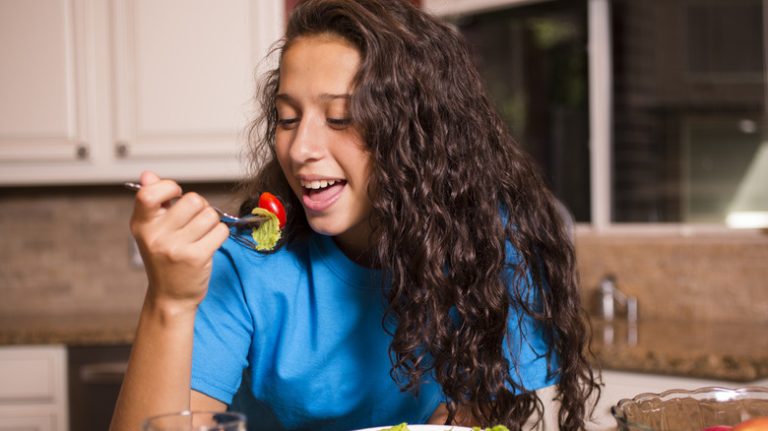For many children, their greatest fear before falling asleep is the boogeyman and other creatures that go bump in the night. Children with sleep apnea, as well as their caregivers, have an additional layer of anxiety before bedtime as a result of the disorder.
A child with sleep apnea will stop breathing for short but frequent periods of time as they sleep at night, according to the Sleep Foundation. Sleep apnea falls into two categories: obstructive sleep apnea (OSA) and central sleep apnea (CSA). OSA is the subtype most prevalent in children, as 1-5% of children live with the condition. When someone has OSA, the airway in their throat becomes blocked, causing snoring, choking, and difficulty breathing. It’s possible for children to experience sleep apnea when their tonsils and adenoids are so large that they block their airways, as explained by the Cleveland Clinic. Children with Down syndrome, nasal allergies, and asthma are at an increased risk of being affected by the condition.
The breathing disturbances associated with sleep apnea can negatively affect a child’s quality of sleep, leaving them feeling lethargic during the daytime. Some children with the disorder may be hyperactive and have trouble learning information. Sleepwalking and bedwetting may occur alongside sleep apnea at night. In some cases, sleep apnea can contribute to life-threatening complications, such as heart failure (per Cleveland Clinic). According to recent research, sleep apnea may also be detrimental to the development of a child’s brain.
What can sleep apnea do to the developing brain?

In a 2024 study published in Sleep, researchers wanted to determine whether OSA interferes with the cognitive function of children. In particular, the study investigated to what extent adolescent children with OSA had differences in brain anatomy compared to those without the disorder. Brain scans were completed on 45 adolescent children without OSA and 53 adolescent children with OSA. All of the participants with OSA either had obesity or were overweight, as obesity can be a risk factor for the disorder. According to the Sleep Foundation, OSA is present in approximately 60% of children with obesity.
The results revealed cortical thinning in the brains of adolescent children with OSA, as well as a larger volume in an area of the hippocampus. The researchers believe these findings are related to how the delivery of oxygen to the brain is continuously disrupted by OSA. As these frequent disturbances occur throughout the night, children with the disorder may not receive the restorative sleep they need for their brains to develop properly (per U.S. News & World Report).
According to a Pediatric Obstructive Sleep Apnea, undiagnosed and untreated OSA in children can lead to cognitive dysfunction, learning difficulties, and lower academic achievement. Early detection and medical interventions are critical for children who are experiencing symptoms of the disorder. After learning about how the disorder impacts the developing brain, we can dive into what treatment options are available for children who have sleep apnea.
How is sleep apnea treated in children?

Choosing the right treatment for a child with sleep apnea first requires a proper diagnosis. A sleep apnea diagnosis can be made by conducting a polysomnogram in an overnight sleep study, according to the Mayo Clinic. Polysomnograms can monitor a child’s brain waves, breathing patterns, oxygen levels, and other physiological functions by using electrodes while they sleep.
In addition to a sleep study, a doctor may ask caregivers about their child’s sleeping behaviors, such as snoring, sleepwalking, or bedwetting. An examination of the throat can determine whether a child has enlarged tonsils or adenoids that are contributing to their breathing problems while sleeping, as explained by the Sleep Foundation.
After a diagnosis of sleep apnea has been made, a treatment plan can be tailored to the underlying cause. In some cases, it may be necessary to surgically remove enlarged tonsils and adenoids when they are the culprits of sleep apnea. According to a 2024 article published in the Journal of Clinical Medicine, continuous positive airway pressure (CPAP) machines can improve sleep quality for children with sleep apnea who don’t have enlarged tonsils and adenoids, as they pump oxygen into their airways while they sleep. Children with OSA and frequent snoring may also benefit from mouth and throat exercises practiced during myofunctional therapy. By exercising the muscles around the face, tongue, and mouth, myofunctional therapy can help a child breathe better and prevent airway obstructions (per Healthline).



